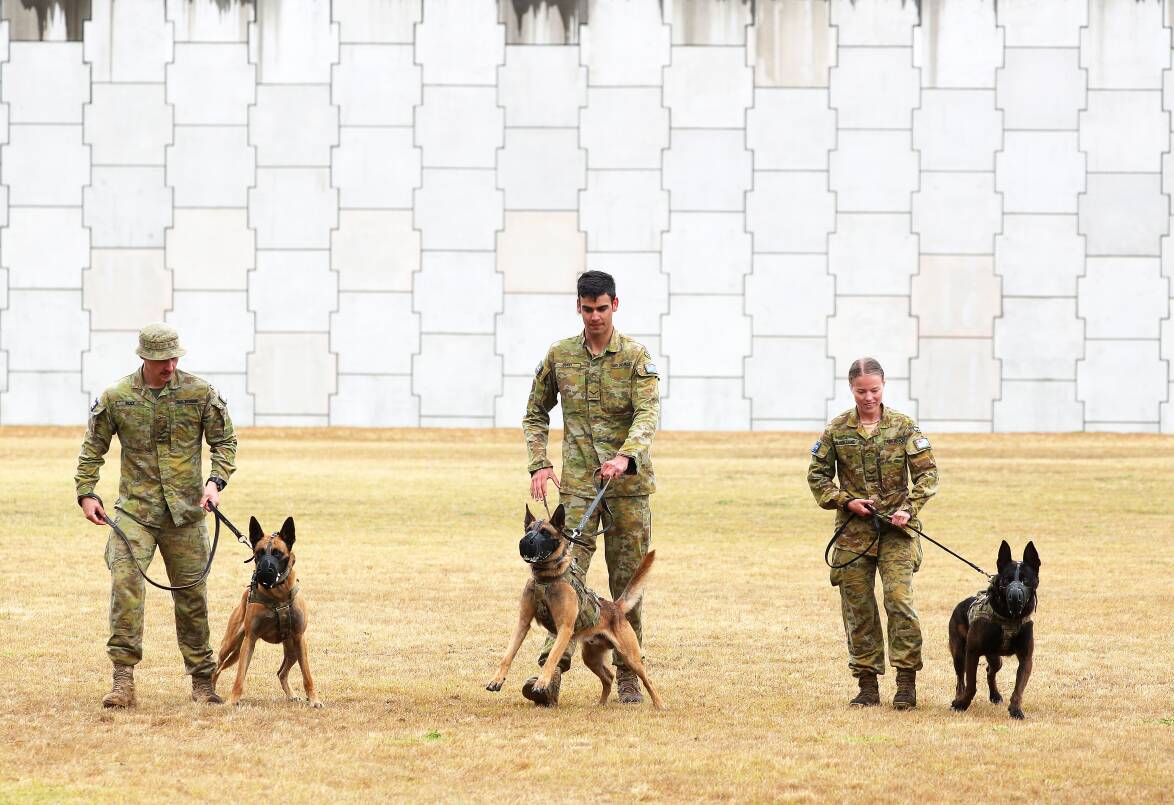THEY'RE the air force asset that never leaves the ground, but their strength is enough to send someone flying or bring them down with a hard landing.
Military working dogs and their handlers make a 'paw-erful' team at Williamtown's air force (RAAF) base.
"We provide a security capability with our dogs, our bite dogs, so they give us a tactical advantage," leading aircraftman (LAC) Jordan Dodd said.
The security force dog handler said their highly-trained and athletic canines can track, do search and rescue missions, help control crowds, and protect the Williamtown site.
"We use their senses like sense of smell, and hearing, to detect and deter people from entering the base or trying to tamper with defence assets and property," LAC Dodd said.
"And, obviously, their bite capability to apprehend people that may be armed and pose a threat to people."
























The squad operates inside the heavily protected Williamtown RAAF base, but the Newcastle Herald went behind the kennel doors to dig deeper into what a day in the life of a military working dog looks like.
The dogs or handlers - or sometimes both - might start their shift with a morning fitness session, before handlers clean the kennels and take the dogs out, then they break off into small groups to train.
"It varies from day to day from either tracking, to bite work, to basic obedience, sometimes we have a little bit of fun in there as well to spice it up, make some scenarios with each other," LAC James Reid said.
Military working dogs Effi, Tazy, Drak and Merlin showed off their skills attacking a person wearing a bite suit on command, taking down someone in civilian clothes, and leaping higher than their handlers' heads.
LAC Dodd and LAC Reid agreed the best part of their jobs was being able to strap into the thick protective suit, or don civilian clothes, and practice being bitten or struck.
"As a handler, it's really rewarding to see what your dog can do, and it's rewarding to see the help that you can provide to other people's dogs," LAC Dodd said.
The dog squad is mostly made up of Belgian malinois, with the military moving away from German shepherds.

LAC Dodd has been working with his dog Effi for about a year, and had one of the last German shepherds before that for about three years.
"I formed a real close attachment with him," LAC Dodd said.
He was able to take the shepherd home to live with him when he was retired.
LAC Reid has been working with Drak for about three years, and said the training and time spent together made them close.
"You definitely form an attachment with them ... you do develop a bit of a bond," he said.

The RAAF's Belgian malinois are just puppies when they start what will eventually become rigorous training.
"Then it will progress slowly up from there, where it starts with fun little playing games and then eventually as they get ready to go onto course they start to have a little bit more pressure put on them," LAC Dodd said.
"Scenarios aren't as game-y and as fun anymore ... we're now asking the dog to be ready to handle a stressful situation."
The dogs are no strangers to attention, and their handlers are expecting a crowd at the demonstration they'll putting on for Newcastle's air show at the Williamtown RAAF base on November 19.
Tickets are on sale now.
"People like to see dogs and they like to see dogs that can work, especially dogs that are super obedient," LAC Reid said.







